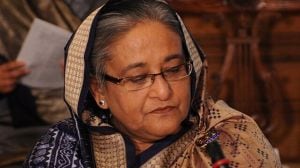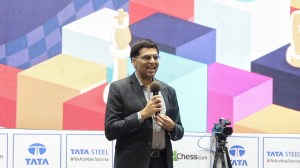New rule will favour our style: Sunny
KOZHIKODE, Aug 17: Grapevine has it that men's volleyball in the country could well turn the corner in the next millennium. The last seve...

KOZHIKODE, Aug 17: Grapevine has it that men’s volleyball in the country could well turn the corner in the next millennium. The last seven and a half months have seen new rules change the face of the game. The popular belief is that the rally-point system and the libero rule suit the Indian style which is rich in technique, but poor in stamina.
“The new rules have come as a blessing in disguise. As the energy levels of Indian players are far behind their foreign counterparts, they lack consistency when a match goes into the fourth and fifth games. But the rally-point system has considerably shortened the game. This will help our players keep up consistency. Moreover, the libero rule has reduced the burden on the regular players as the libero can be a welcome relief with his frequent entry and exit,” said Sunny Joseph, coach when Kerala won the National title for the first time in 1997.
“Earlier, there was no proper system to monitor the performance of the probables in the country. The Indian juniorteam defeated formidable teams like Japan, China and Qatar in 1995 to finish second in the Asian Youth Championship and they also managed to reach ninth position in the world. But of the 18 juniors, only four Joby Joseph, Ravikant Reddy, Surjeet Singh and Rajesh qualified for the senior team. There was little follow-up to help the players consolidate their position. As a result, talented players like Ratan Lal and Nagaraj Hegde, to name a few, went into oblivion.
“But now, the coaching and selection system have become more professional. Thirty-five top players are undergoing a camp under National coach GE Sridharan at Sports Authority of India, Bangalore. They are being trained to capitalise on the advantages of the new rules. The focus there will be on how to fine-tune blocks and avoid wasting serves to snatch maximum points.”
Sunny observed that emphasis on the height factor was a wise policy. “The average height of the Indian spiker (not less than 1.96m) is not much behind that of a Netherlands ora Cuban player. But the difference is in physique and stamina. Moreover, the foreign players have enormous international exposure.
“The Korean and Japanese teams are usually reluctant to play India as they do not want the Indians to get familiar with their style. They prefer stronger European opponents and that gives them an edge in the Asian Games.“India must make trips to countries like Chile, Tunisia, Romania and Italy to sharpen their skills. The Volleyball Federation of India (VFI) will do well to arrange some exchange’ tours with these small countries who have better teams than India,” said the NIS coach, employed with the Kerala Sports Council.
“Indian players come up with spectacular jump-serves while playing in domestic tournaments. When they go abroad, they get easily intimidated by the opposition and hesitate to go for the jump-serves although they are pretty good at them. That is because of their low confidence level.”
He said much money could be saved by avoiding “useless” tours.“There is no point in playing weak teams like Bangladesh, Sri Lanka or Pakistan. This so-called international exposure is not only a waste of money, but also the player develops a false sense of self-esteem.”



- 01
- 02
- 03
- 04
- 05




























